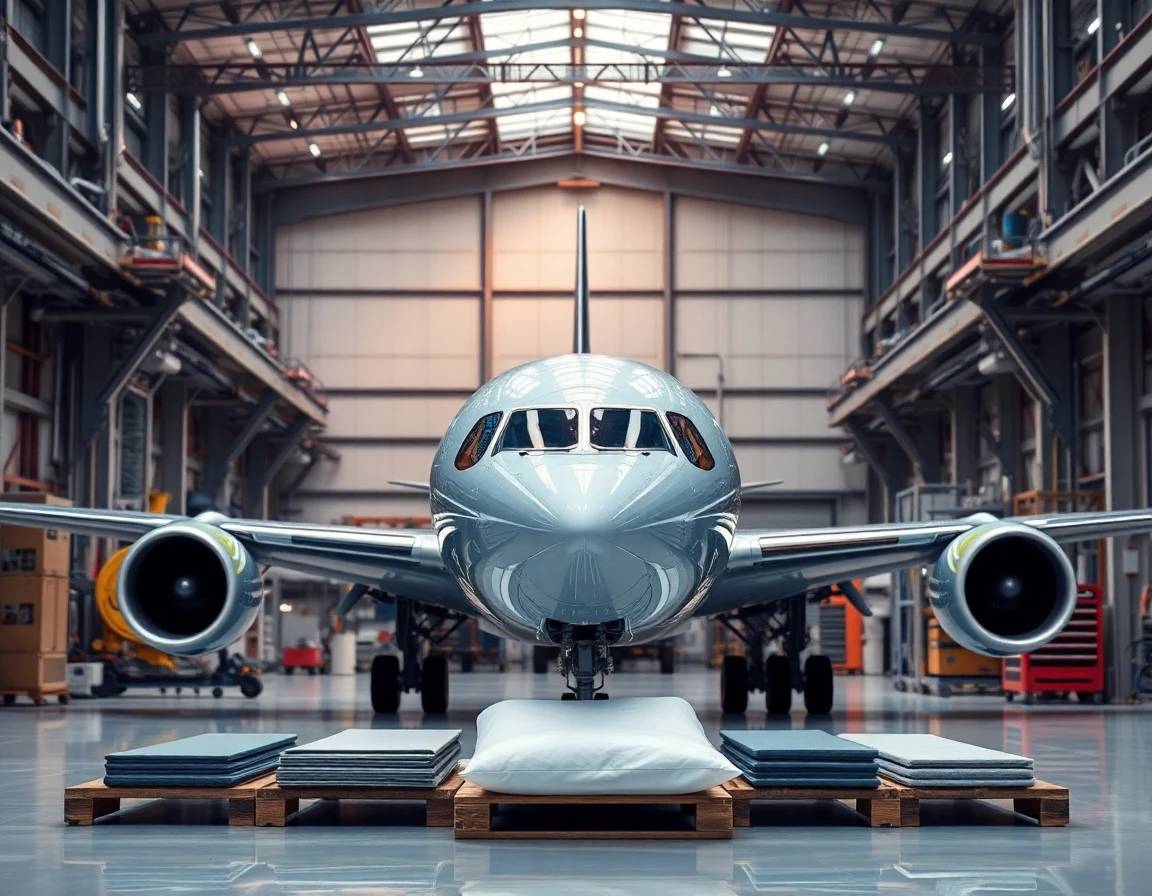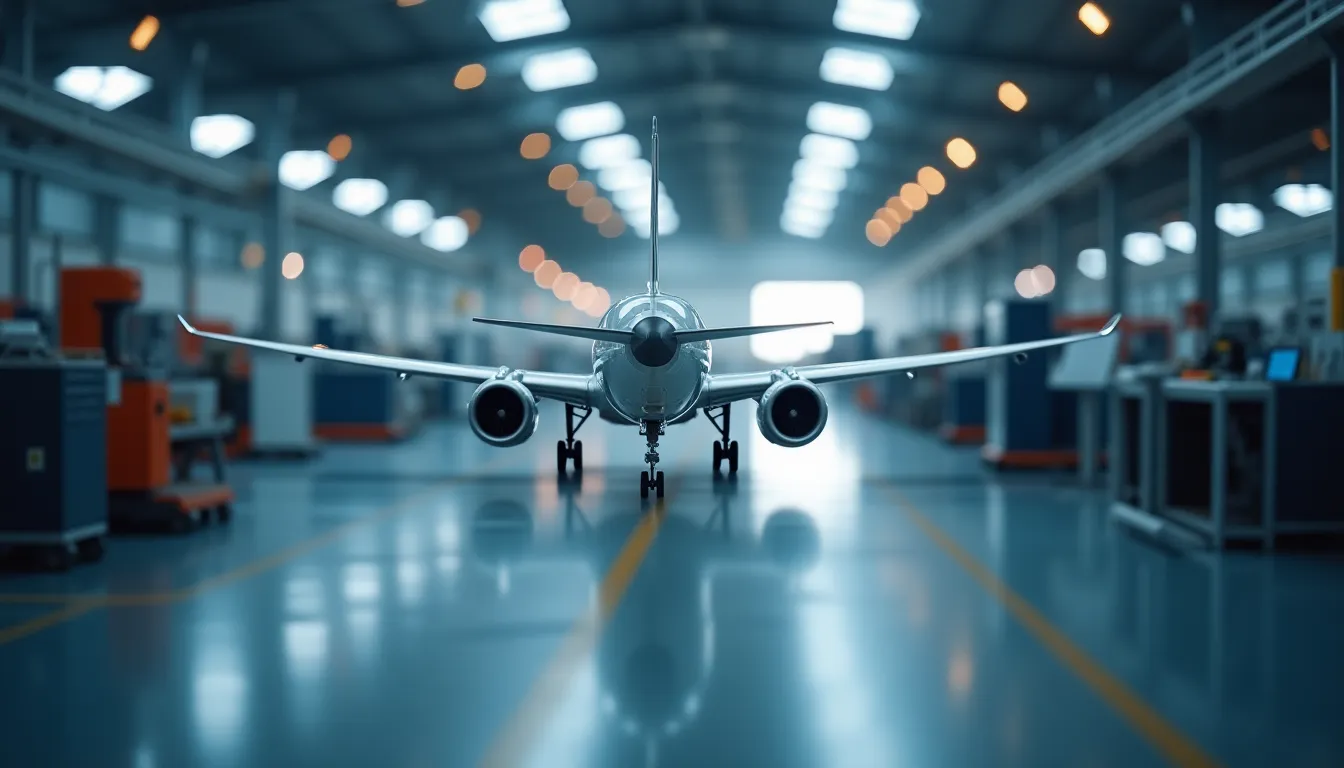The aerospace industry is experiencing a significant transformation, driven by the introduction of revolutionary materials and cutting-edge manufacturing techniques. These advancements not only enhance the performance and safety of aircraft but also streamline production processes, reduce costs, and minimize environmental impact. As the demand for more efficient and durable aerospace materials grows, the industry is poised for substantial innovations.
The Evolution of Aerospace Materials
Traditionally, aerospace materials were predominantly metals such as aluminum and titanium, known for their strength and durability. However, the advent of composite materials has paved the way for lighter, more flexible alternatives. Advanced composite materials, particularly carbon fiber reinforced polymers (CFRPs), are now widely used in aircraft structures, providing excellent strength-to-weight ratios and corrosion resistance.
Benefits of Composite Materials
The shift to composite materials has brought several advantages:
- Weight Reduction: CFRPs can reduce the weight of aircraft components by up to 50%, leading to improved fuel efficiency and increased payload capacity.
- Corrosion Resistance: Unlike metals, composites do not corrode, which reduces maintenance costs and extends the lifespan of aircraft components.
- Design Flexibility: Composites allow for complex shapes and designs that are not possible with traditional materials, enabling engineers to optimize aerodynamic performance.
As Dr. Emily Johnson, an aerospace materials expert at the National Aeronautics and Space Administration (NASA), notes, “The integration of advanced aerospace materials is not just about replacing metal with composites; it’s about rethinking the entire design and manufacturing process for enhanced performance.”
Manufacturing Innovations
Alongside the development of new materials, innovative manufacturing techniques such as additive manufacturing (3D printing) are reshaping the aerospace sector. This technology allows for the production of intricate parts with reduced waste and shorter lead times. For example, companies like Boeing and Airbus are investing heavily in 3D printing technologies to create complex aerospace components that were previously impossible to manufacture.
The Role of Additive Manufacturing
Additive manufacturing provides several key benefits to aerospace production:
- Customization: Components can be tailored to specific requirements, improving overall performance.
- Reduced Waste: Unlike traditional subtractive manufacturing, 3D printing minimizes material waste, which is critical in an industry focused on sustainability.
- Rapid Prototyping: The ability to quickly produce prototypes accelerates the development cycle, allowing for faster testing and iteration.
Future Trends in Aerospace Materials
The future of aerospace materials is being shaped by emerging technologies such as nanomaterials and bio-inspired designs. Researchers are exploring ways to create stronger, lighter materials at the molecular level, which could revolutionize aircraft design and construction.
Nanotechnology in Aerospace
Nanomaterials, which are engineered at the atomic scale, have the potential to significantly enhance the properties of aerospace materials. For instance, incorporating carbon nanotubes into composites could lead to materials that are not only lighter but also have increased thermal and electrical conductivity. This opens up possibilities for integrating advanced thermal management systems into aircraft designs, improving overall efficiency and performance.
The Integration of Satellite Communication Technologies
As aerospace materials advance, the integration of satellite communication technologies also plays a crucial role. Modern aircraft increasingly rely on high-bandwidth satellite communication systems to enhance connectivity and data transmission capabilities. This requires materials that can withstand the rigorous demands of electronic systems while remaining lightweight and efficient.
High-Performance Aerospace Materials for Communication Systems
The need for robust aerospace materials extends to the development of components for satellite-communication systems. These systems rely on advanced materials that can endure extreme temperatures and pressures while ensuring reliable operation. The use of high-performance composites in these applications is paving the way for more efficient and reliable communication networks in aerospace.
Expert Insights on Future Developments
Industry experts anticipate that the next decade will bring significant advancements in aerospace materials. According to Dr. Robert Smith, a leading researcher in aerospace engineering, “As we continue to push the boundaries of aerospace materials, we can expect to see innovations that not only improve aircraft performance but also enhance safety and sustainability in the industry.”
Conclusion
The aerospace materials landscape is evolving rapidly, driven by the demand for lighter, stronger, and more efficient components. As manufacturers adopt advanced materials and innovative production techniques, the potential for future developments appears limitless. With ongoing research and investment, the aerospace industry is set to soar to new heights, ensuring that the next generation of aircraft will be more efficient, safe, and environmentally friendly than ever before.
The integration of advanced inertial navigation systems and other cutting-edge technologies into aircraft designs will further enhance performance, demonstrating the critical role that materials science plays in the future of aviation. As we move forward, the synergy between materials innovation and technological advancement will be key to unlocking the full potential of the aerospace industry.
References
-
aerospace materials Research - defensenews.com (defensenews.com)
-
aerospace materials Research - aviationweek.com (aviationweek.com)
-
aerospace materials Research - spacenews.com (spacenews.com)



